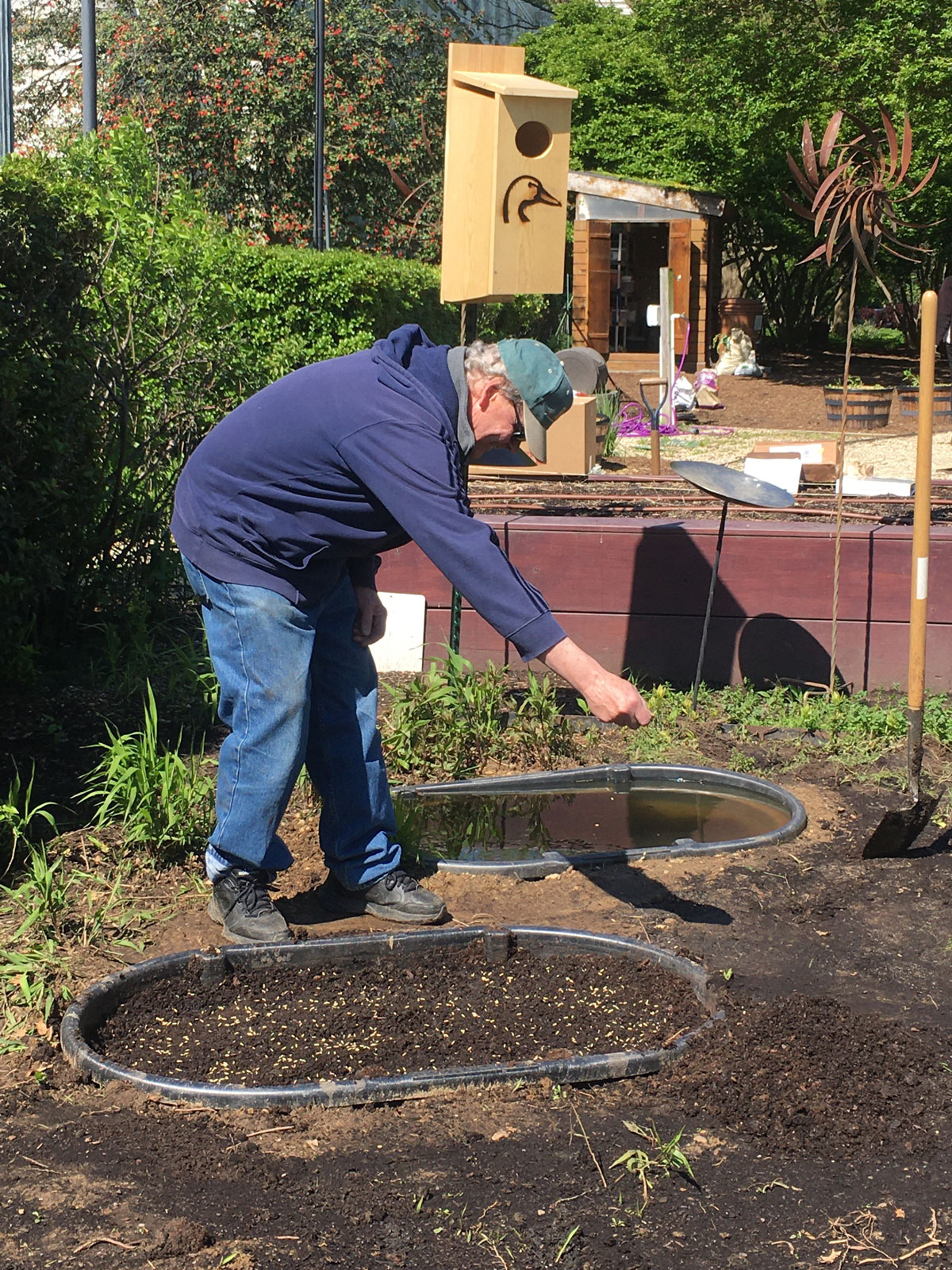 #Plant2020
#Plant2020
May 18, 2020
WASHINGTON, DC -- It’s true that the vast majority of rice in the U.S. is grown in the south and in California. But rice is a resourceful plant that can surprise you and show up where you least expect it—even in our nation’s capital.
In early May, the Farm Journal Foundation and the U.S. Department of Agriculture (USDA) planted rice in its “Voice of the Farmer” garden, a small plot of land adjacent to the National Mall exhibiting a variety of plants and crops with a focus on sustainability and conservation. Featuring pollinator gardens, mini-wetlands, row crops, and a large vegetable garden that provides fresh produce to local food assistance charities, the garden showcases growing and harvesting techniques used by farmers across the country.
Dr. Steve Linscombe, director of The Rice Foundation, is providing his expertise on planting and flooding techniques to help get this small-scale rice crop up and running. Although Washington, DC, may seem like an unlikely place to grow rice, Linscombe has no doubts about the crop’s viability.
“The latitude of Washington is about 39 degrees north, which is very similar to the latitude of Colusa, California, where, of course, rice is grown,” said Linscombe. “So, I think it will be easy for them to complete the crop.”
Linscombe advised Farm Journal Foundation and USDA staff to plant the rice in containers set into the ground rather than directly into the garden’s soil, as a simple mechanism for maintaining a flood when the time comes. The seeds are a Clearfield long grain variety called CL153 and were provided by the Louisiana State University Rice Research Station near Crowley.
The Capital’s new rice crop will be in good company: Ducks Unlimited has provided the garden with a duck box and a small pond to entice cavity-nesting ducks to the area.
While the garden produces real food, its primary purpose is educational. Many of the visitors to the National Mall live in urban areas and may not have much knowledge about farming. The “Voice of the Farmer” garden will connect visitors to the food on their table and educate them about the agriculture.
“I believe having rice grown near the National Mall will facilitate communication of our sustainability efforts,” said Linscombe. “It’s a way for visitors and tourists to connect with where their food comes from and how it’s produced.”
“We’re honored to add rice to the menu this year at our “Voice of the Farmer” garden,” said Jay Vroom, senior advisor at the Farm Journal Foundation. “The National Mall has an overall estimated 20 million visitors in a normal year, so the garden is the perfect showcase to tell the story of modern agriculture to consumers.”
Vroom does hope to harvest the rice at the end of the growing season but recognizes that it is only a tiny fraction of the size of an actual rice field. Whatever rice is produced will be donated to local food non-profits. But the garden’s main goal is outreach.
“Last year our outreach connected with so many inquisitive and energetic visitors who want to know about their food and the farmers who grow it,” said Vroom. “The uniqueness of rice— alongside the DU wood duck box and pond—can help explain how farmers and nature need and coexist with each other.”